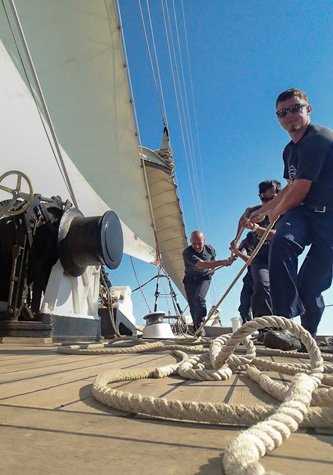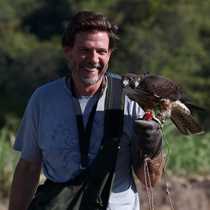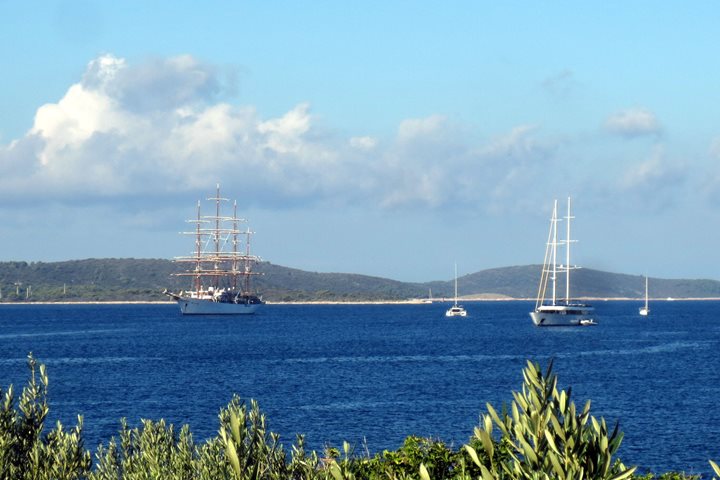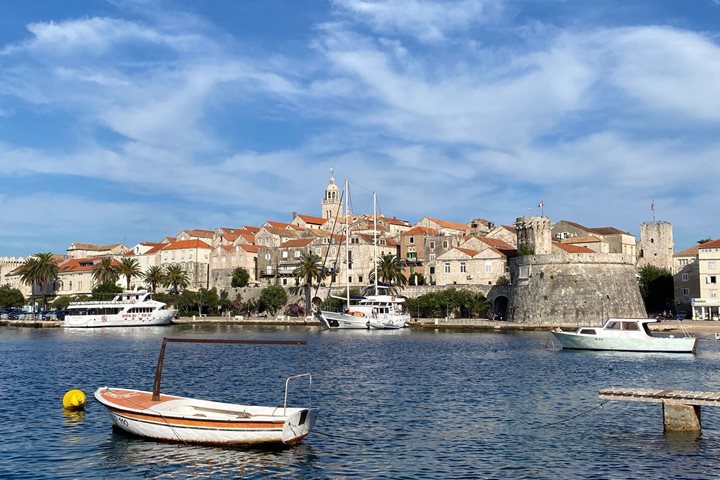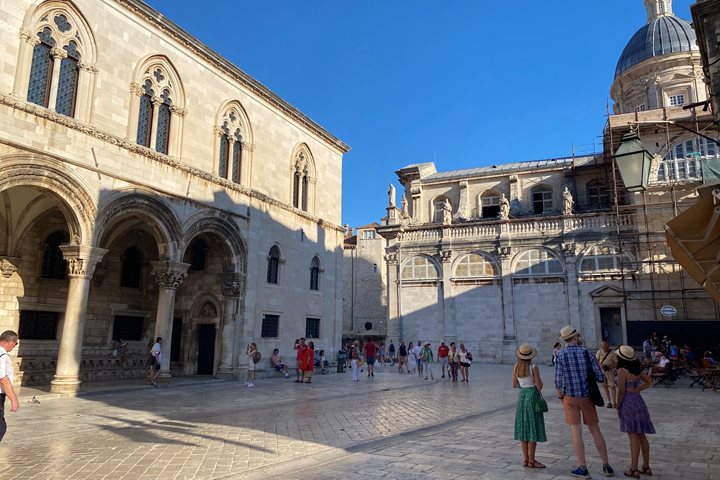On a wonderful, sunny morning of June 12th we arrived to the island of Korcula—to be more exact to the town of Korcula—in the south of Croatia.
We started the day with a walking tour where we visited some of the highlights of the town. After disembarking and walking along the walls, we reached the old town and headed to the church and icon collection of the Brotherhood of all Saints. That is the oldest of three brotherhoods in Korcula and they are keepers of ancient traditions as they dress in tonigas, and carry large wax candles on Good Friday. We’ve also seen couple of old Italo-Cretan icons from 13th to 17th century and the painting of the Last Supper, on which supposedly silverware was pictured for the first time. As we were preoccupied with our thoughts we continued along the only street in Korcula with no stairs—the so called Street of Philosophers.
We’ve also noticed the herringbone structure of the town—streets on the right hand side to the cathedral are curved and those on the left hand side are straight and you can see the sea. Such a structure stops the cold winds in winter and lets in the fresh, cool breeze in the summer. Along the way we’ve visited the Treasury in the Bishop’s palace after which we continued to the wonderful 15th century cathedral of St. Mark, named after patron saint of Korcula. One of the highlights of the cathedral was the Tintoretto painting of SS Jerome, Bartholomew, and Mark. A must-see in Korcula—no matter whether true or not—is the alleged birth house of famous explorer and trader Marco Polo. Although there is no written document, Croats believe he was born in Korcula and they base the presumption on the old local surname De Polo. As Korcula was under Venetian rule, so Marco Polo was Venetian, perhaps of Croatian heritage.
After the guided tour we had a privilege of enjoying a performance of an old traditional sword-dancing called Moreska. It is presumably a medieval dance that used to be performed in the Mediterranean and that describes a fight between the Whites (Christians dressed in red costumes) and Blacks (Muslims dressed in black costumes) for a girl named Bula. Nowadays it’s performed only in Korcula. After the dancing and free time for exploration of the island on our own we enjoyed great sailing, including sailing the ship on our way to another pearl of the Adriatic—Dubrovnik!

